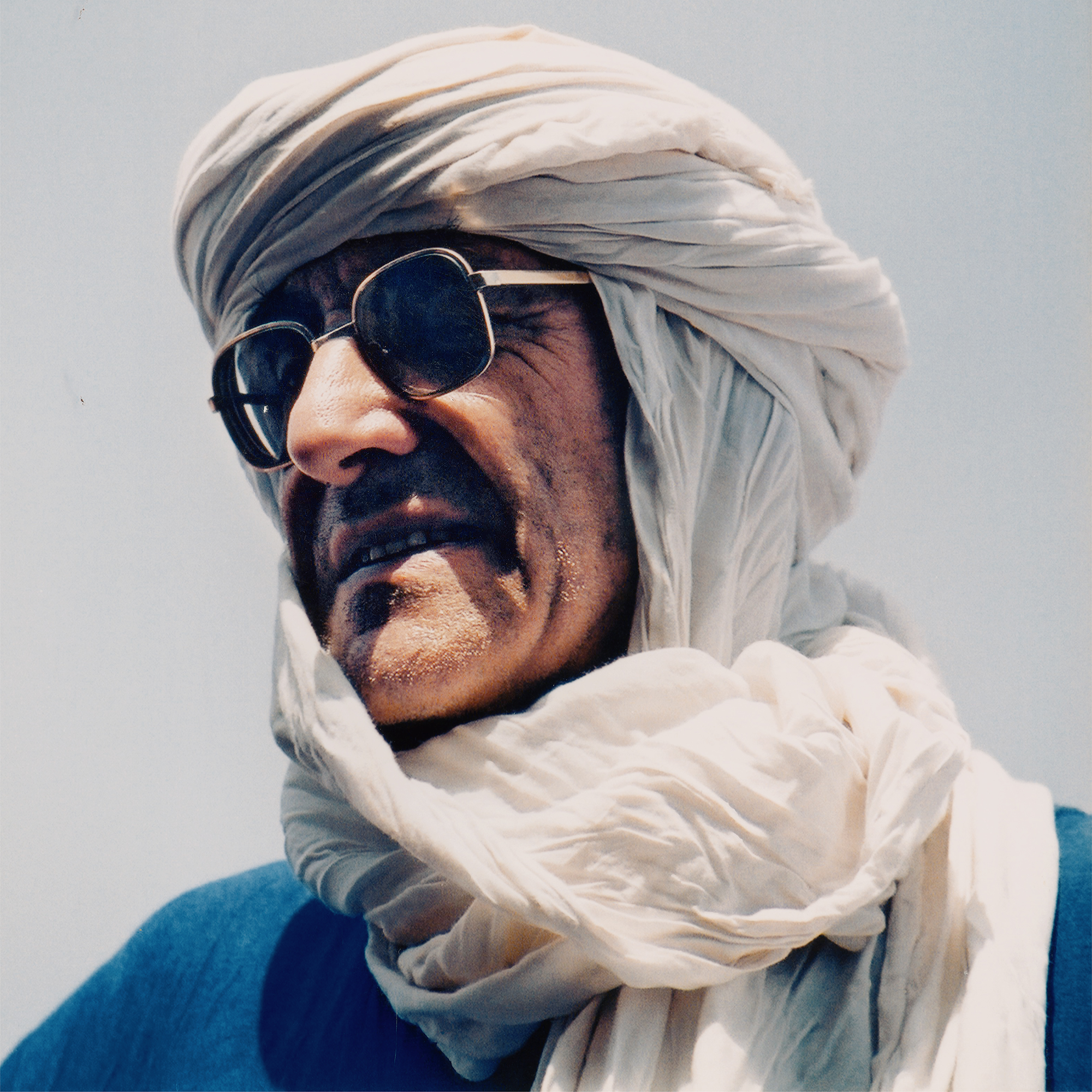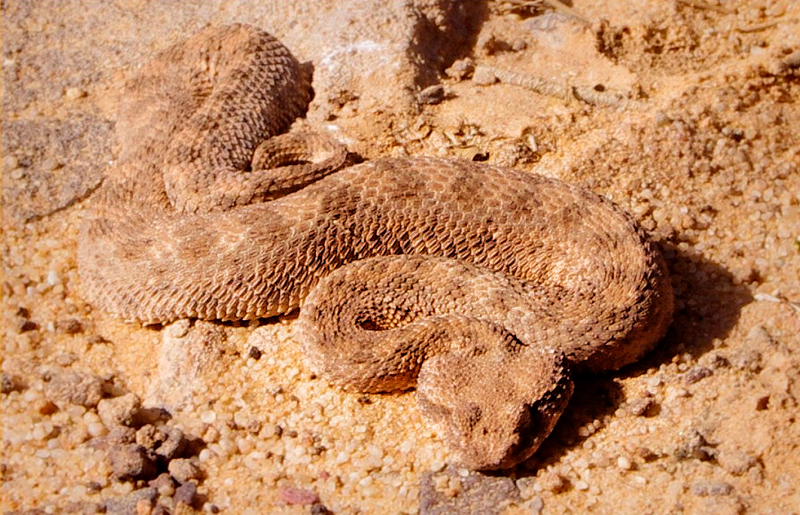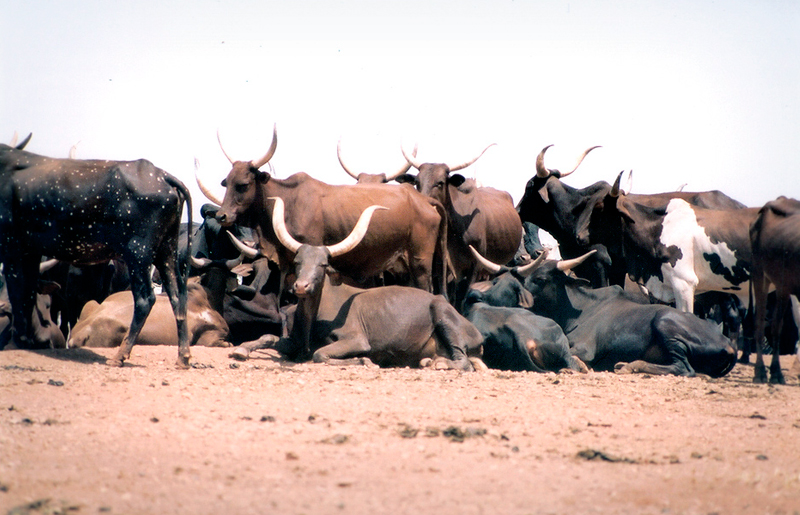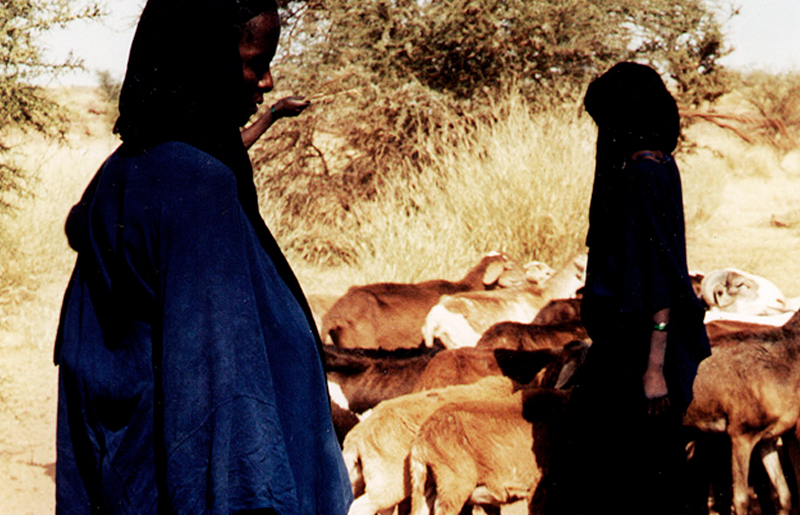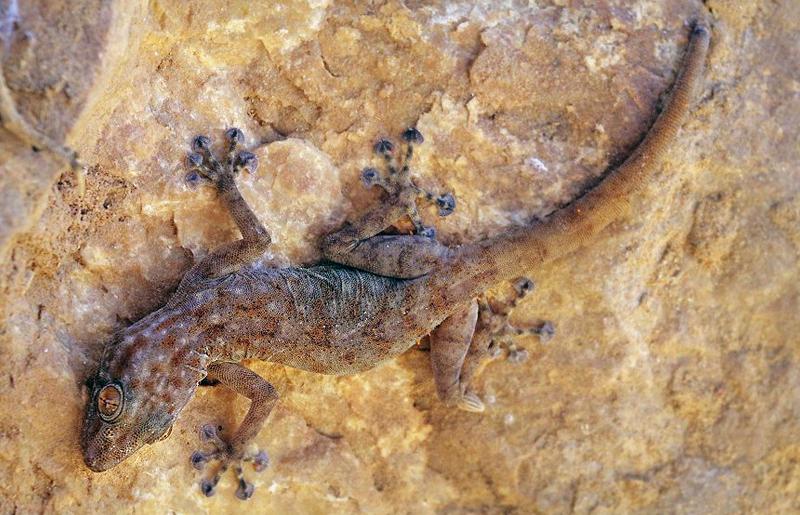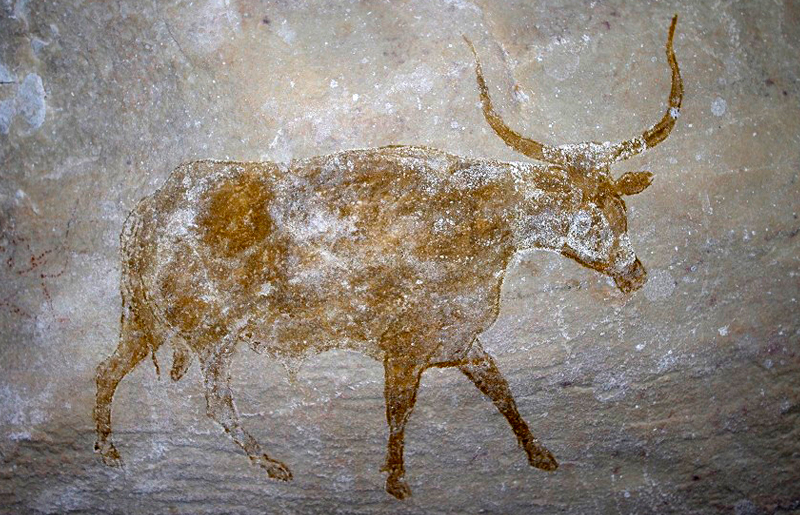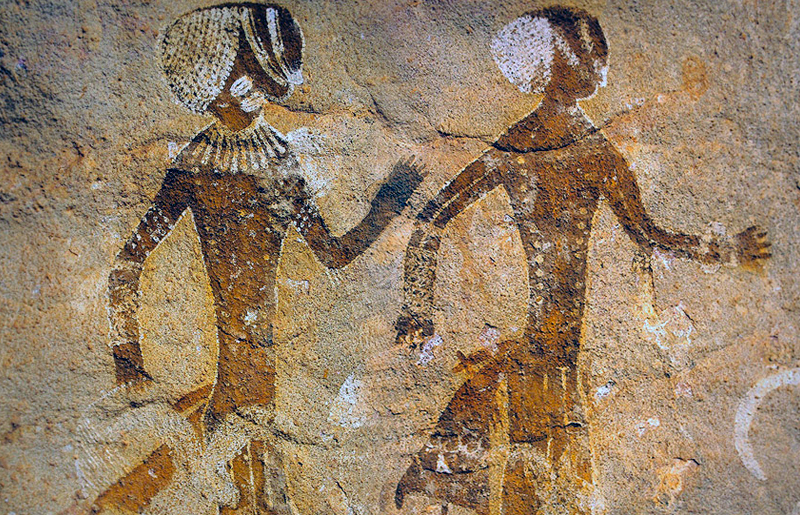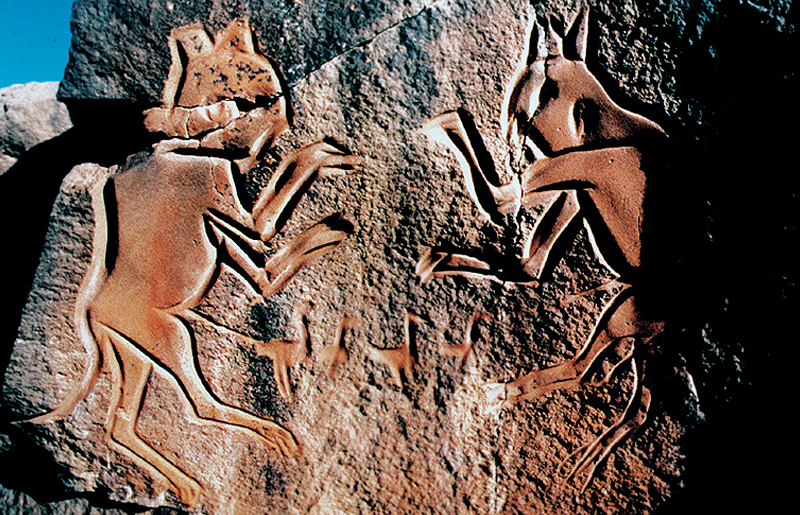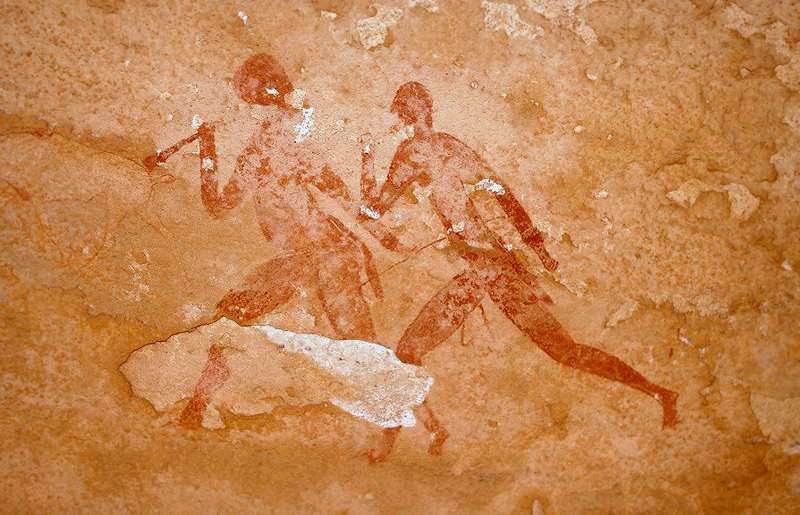
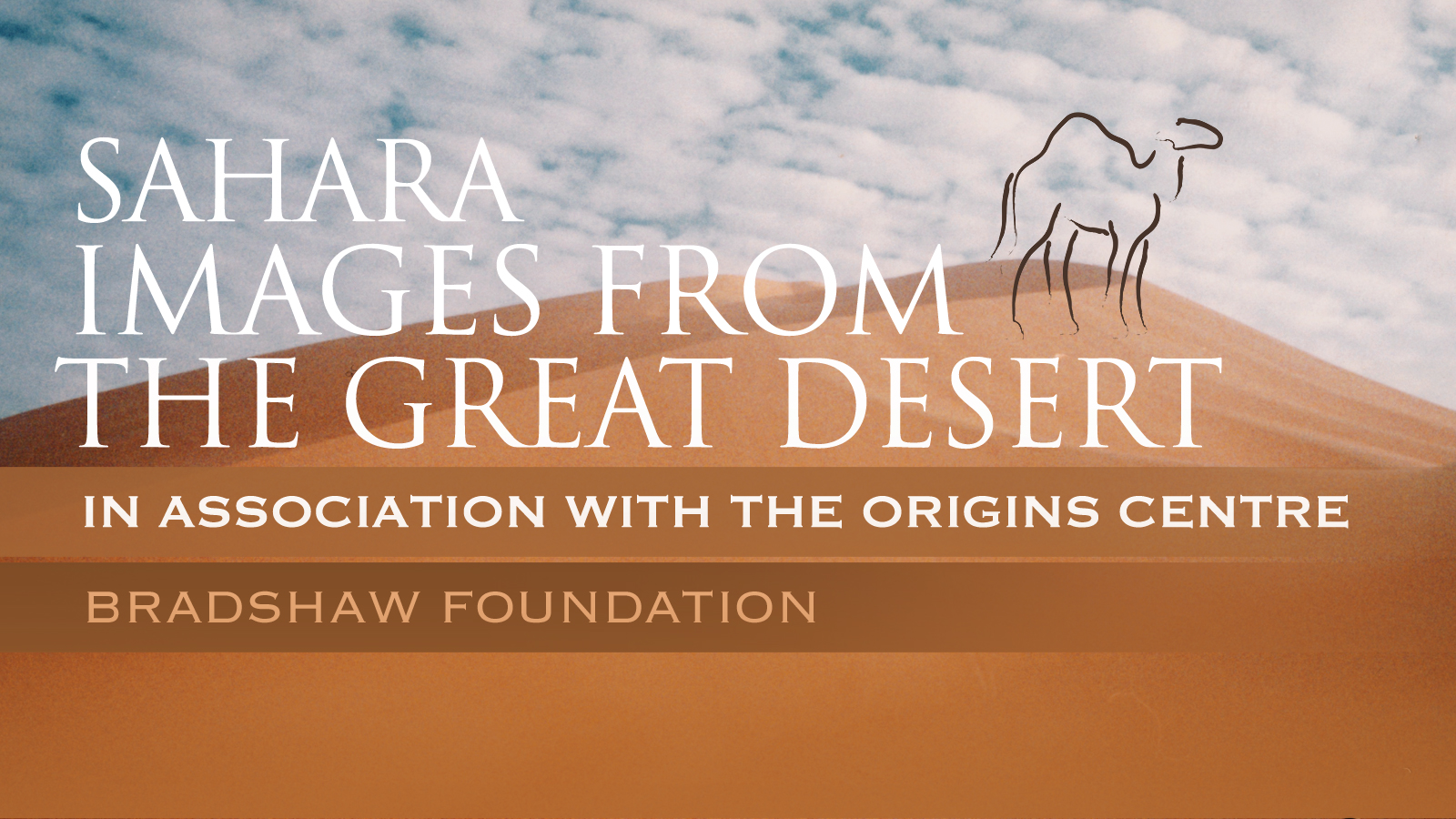
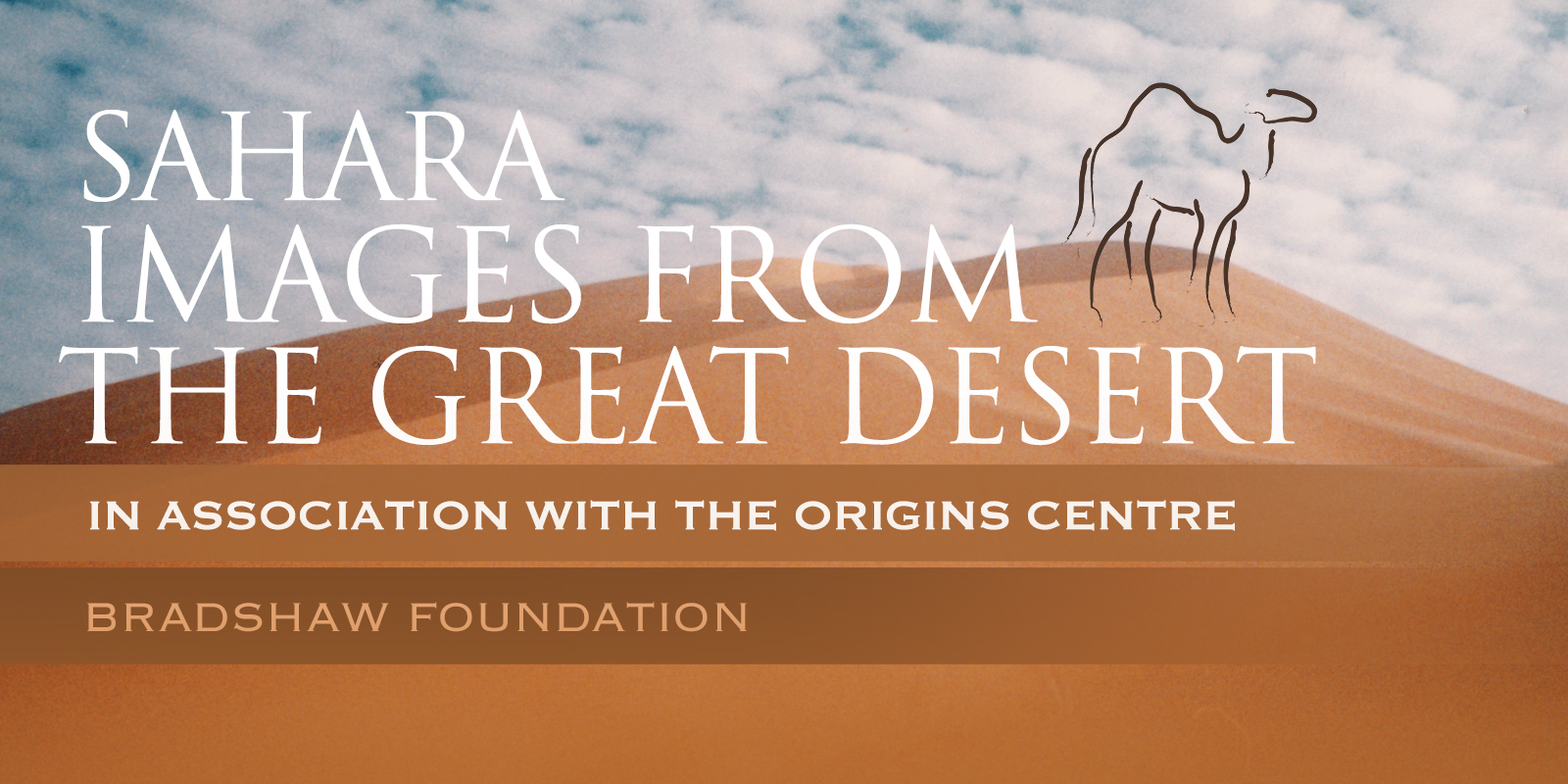

An aluminium cast of the Dabous Giraffe was donated to Niger subsequently, and placed in Agadez, the small desert town nearest to the Dabous site, in the hope of encouraging the preservation of rock art sites as well as generating an eco-tourism for the region. The preservation project allowed the Bradshaw team to further explore this part of the Sahara, the Tenere Desert, with the eminent French prehistorian Dr. Jean Clottes, where numerous examples of rock art and archaeological artefacts were discovered.
After the moulding of the big giraffes had been successfully carried out in 1999, Jean Clottes suggested a complete the recording of the engravings in the Dabous ensemble, because they provided their context. In 1999, he had completed the map of the Dabous sandstone outcrop, with the help of his wife Renee. Working in two teams (David Coulson and Alec Campbell on one hand, Renee and Jean on the other) they also recordeded 430 engravings and filled as many descriptive forms. It is reckoned - 1999 - that the Dabous could number about 600 petroglyphs in all.
→ Subscribe free to the Bradshaw Foundation YouTube Channel
→ Discover more about the Rock Art of Africa
→ Discover more about the Rock Art of Namibia
→ The White Lady of Brandberg / Daureb Mountain
→ Rock Art Network Colloquium - Namibia 2017
→ The Rock Art of Twyfelfontein /Ui- //aes, Namibia
→ The Damara People
→ Reflecting Back: 40 Years Since ‘A Survey of the Rock Art in the Natal Drakensberg’ Project (1978-1981)
→ Animals in Rock Art
→ Bradshaw Foundation
→ Rock Art Network
